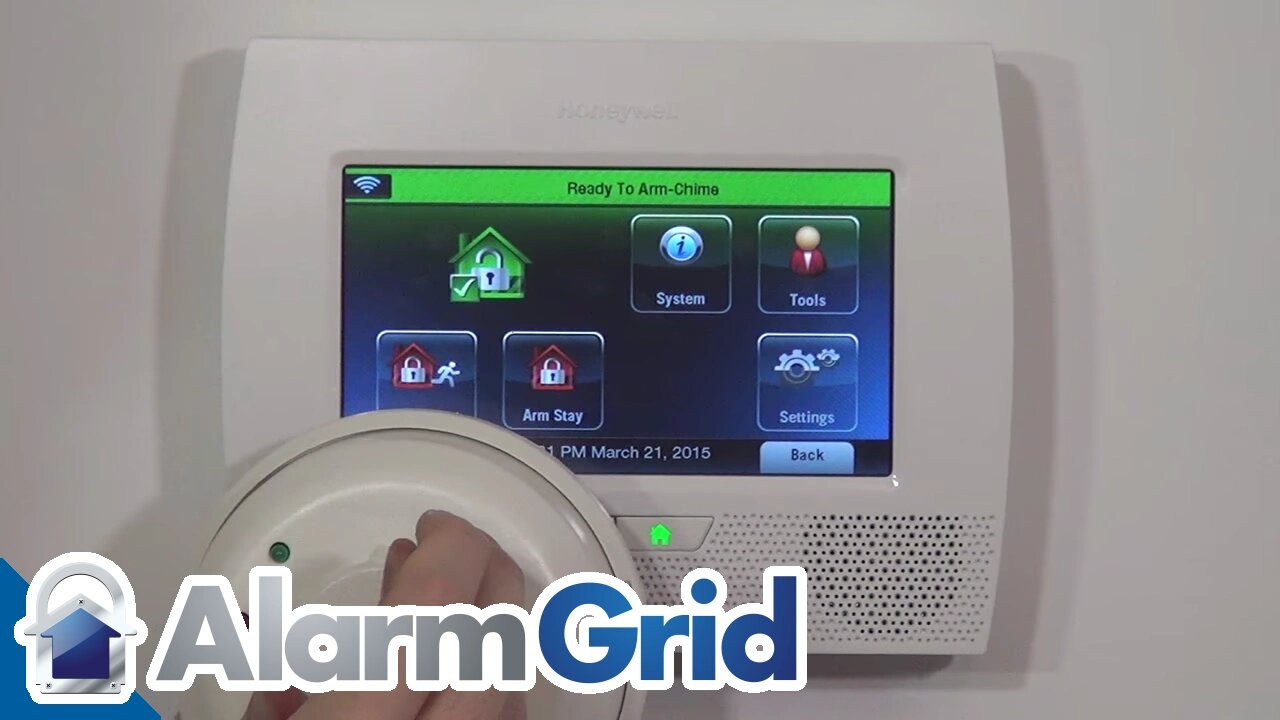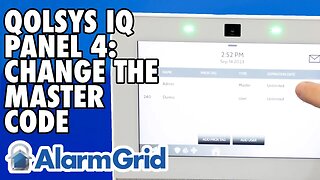Premium Only Content

Honeywell 5808W3: Program Low Temp Zone on L7000
Your existing Honeywell 5808W3 system can be easily programmed to detect drastic temperature drops inside your home. Here’s how:
Honeywell 5808W3: http://alrm.gd/honeywell-5808w3
Honeywell L7000: http://alrm.gd/honeywell-l7000
An alarm system protects against break-ins and other unauthorized access. Beyond person-based threats, the system can protect your home against environmental threats, too. This tutorial shows how to program your existing Honeywell 5808W3 to protect against cold temperatures.
After setup, the alarm will sound if the temperature in an area of your home drops below 41 degrees. A drastic drop in temperatures can cause pipes to freeze and burst. While not strictly a lifesaving feature, a fast warning for plummeting temps can protect your property.
As the video explains, the same sensor you’re already using for the 5808W3 can be programmed to detect temperature. Don’t worry – security, tamper and fire protections remain in place.
The tutorial shows you how to program a low-temperature zone using the unit’s control panel. To do this, you’ll need to first enter the Tools section. This requires inputting your installation code, selecting Program and then Zones.
You’ll create new zones for cold detection. However, there’s really no need to program your entire house. In the example, we create zones for areas where cold temps and burst pipes are most likely to be an issue. These are often the lower levels of a house such as a garage or basement.
You’ll need to know the serial number of the sensors in the room where you want cold coverage. The video shows you where to find these numbers on the sensor packaging.
The video also provides a solution to a common problem. Many people accidentally try to add cold temperature detection to an existing zone. Unfortunately, this creates an error message reading “Duplicate Serial or Loop Number.”
Instead, you’ll want to set up low temp zones on loop three. The tutorial walks you through the steps to put the sensor on the loop and then configure the device for temperature.
You’ll also set the temperature detection to 24-hour auxiliary. After all, you never know when the temperature might quickly plummet.
Each zone can be labeled in two categories. In the example shown in the video, we label a zone as Downstairs and Cold. This lets us easily identify the part of the house being monitored as well as the type of detection in effect.
Proper setup is important because you want accurate information if the alarm ever activates. By following the guide in the tutorial, your control panel will display the phrase “Low Temperature Zone” in the event of a sudden temp drop. This lets you instantly know which part of the home you need to check out.
If more than one event occurs simultaneously, the display will cycle through each event. We’ll show you how to conduct a test using a ballpoint pen. In the video, our test set off both the fire and low-temperature alarm for a downstairs zone.
Setting up low-temperature detection adds a useful feature to your existing alarm system. Our video covers everything you need to know about how to designate low-temperature zones. A burst pipe can cause a lot of damage, but setting up cold air detection can help keep your home safe and dry.
-
 4:37
4:37
Alarm Grid Home Security DIY Videos
2 years agoQolsys IQ Panel 4: Change the Master Code
34 -
 2:50:47
2:50:47
TimcastIRL
3 hours agoFOOD STAMPS OVER, Ending Nov 1, Food RIOTS May Spark Trump INSURRECTION ACT | Timcast IRL
177K77 -
 2:18:46
2:18:46
Tucker Carlson
3 hours agoTucker Carlson Interviews Nick Fuentes
39.6K230 -
 LIVE
LIVE
Drew Hernandez
13 hours agoCANDACE OWENS CALLS CHARLIE KIRK STAFF INTO QUESTION?
1,222 watching -
 47:03
47:03
Barry Cunningham
5 hours agoPRESIDENT TRUMP MEETS WITH THE PRIME MINISTER OF JAPAN!! AND MORE NEWS!
22.4K20 -
 DVR
DVR
Flyover Conservatives
22 hours agoThe Dollar Devaluation Playbook: Gold, Bitcoin… and the “Genius Act” - Andy Schectman | FOC Show
11.5K3 -
 LIVE
LIVE
SpartakusLIVE
5 hours agoWZ Tonight || Battlefield 6 BATTLE ROYALE Tomorrow!
234 watching -
 LIVE
LIVE
megimu32
3 hours agoON THE SUBJECT: Halloween Nostalgia! LET’S GET SPOOKY! 👻
61 watching -
 1:24:56
1:24:56
Glenn Greenwald
5 hours agoThe Unhinged Reactions to Zohran's Rise; Dems Struggle to Find a Personality; DHS, on Laura Loomer's Orders, Arrests UK Journalist and Israel Critic | SYSTEM UPDATE #538
105K58 -

Spartan
4 hours agoBack from worlds. Need a short break from Halo, so single player games for now
13.9K